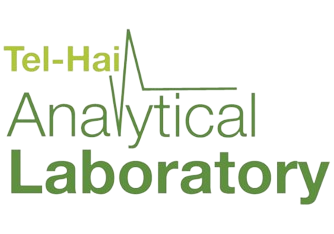FTIR (Fourier Transform Infra-Red Spectroscopy)
Olshansky, Y., Masaphy, S., Root, R.A., Rytwo, G., 2018. Immobilization of Rhus vernicifera laccase on sepiolite; effect of chitosan and copper modification on laccase adsorption and activity. Appl. Clay Sci. 152, 143–147. https://doi.org/10.1016/j.clay.2017.11.006
Abdelhadi, S.O., Dosoretz, C.G., Rytwo, G., Gerchman, Y., Azaizeh, H., 2017. Production of biochar from olive mill solid waste for heavy metal removal. Bioresour. Technol. 244, 759–767. https://doi.org/10.1016/j.biortech.2017.08.013
Gutman, R., Rauch, M., Neuman, A., Khamaisi, H., Jonas-Levi, A., Konovalova, Y., Rytwo, G., 2019. Sepiolite Clay Attenuates the Development of Hypercholesterolemia and Obesity in Mice Fed a High-Fat High-Cholesterol Diet. J. Med. Food jmf.2019.0030. https://doi.org/10.1089/jmf.2019.0030
Rendel, P.M., Rytwo, G., 2020. The Effect of Electrolytes on the Photodegradation Kinetics of Caffeine. Catal. 2020, Vol. 10, Page 644 10, 644. https://doi.org/10.3390/CATAL10060644
Argaman, O., Ben-Barak Zelas, Z., Fishman, A., Rytwo, G., Radian, A., 2021. Immobilization of aldehyde dehydrogenase on montmorillonite using polyethyleneimine as a stabilization and bridging agent. Appl. Clay Sci. 212, 106216. https://doi.org/10.1016/j.clay.2021.106216
Ben Moshe, S., Rytwo, G., 2018. Thiamine-based organoclay for phenol removal from water. Appl. Clay Sci. 155, 50–56. https://doi.org/10.1016/j.clay.2018.01.003
ICP-AES (Inductively coupled plasma atomic emission spectroscopy)
Rendel, P.M., Rytwo, G., 2020. The Effect of Electrolytes on the Photodegradation Kinetics of Caffeine. Catal. 2020, Vol. 10, Page 644 10, 644. DOI: 10.3390/CATAL10060644
Olshansky, Y., Masaphy, S., Root, R.A., Rytwo, G., 2018. Immobilization of Rhus vernicifera laccase on sepiolite; effect of chitosan and copper modification on laccase adsorption and activity. Appl. Clay Sci. 152, 143–147.DOI: 10.1016/j.clay.2017.11.006
Basheer Loai, Ben-Simchon Eyal, Cohen Alisa, and Shelef Oren. "From Traditional Food to Functional Food? Evaluation of Malvaceae Species as Novel Food Crops". Agronomy, 11, 1294, (2021): DOI: 10.3390/agronomy11071294
Cattan Y., Patil D., Vaknin Y., Rytwo G., Lakemond C, Benjamin O. (2022) Characterization of Moringa oleifera leaf and seed protein extract functionality in emulsion model system. Innovative Food Science and Emerging Technologies 75 (102903). DOI: 10.1016/j.ifset.2021.102903
GC-MS (Gas Chromatography Mass Spectrometry)
Arieli, R., and Khatib, S. (2022) Dipalmitoylphosphatidylcholine in the heart of mice with lupus might support the hypothesis of dual causes of autoimmune diseases, Respiratory Physiology & Neurobiology 300, 103871. DOI: 10.1016/j.resp.2022.103871
Arieli, R., Khatib, S., Khattib, A., Bukovetzky, E., and Gottfried, O. D. (2021) Is the probable spillage of the lung surfactant dipalmitoylphosphatidylcholine the ultimate source of diabetes type 1?, Respiratory Physiology & Neurobiology 286, 103615. DOI: 10.1016/j.resp.2020.103615
Atrahimovich, D., Harris, R., Eitan, R., Cohen, M., and Khatib, S. (2021) Galantamine Quantity and Alkaloid Profile in the Bulbs of Narcissus tazetta and daffodil cultivars (Amaryllidaceae) Grown in Israel, Metabolites 11, 185. DOI: 10.3390/metabo11030185
Degani, O., Khatib, S., Becher, P., Gordani, A., and Harris, R. (2021) Trichoderma asperellum Secreted 6-Pentyl-α-Pyrone to Control Magnaporthiopsis maydis, the Maize Late Wilt Disease Agent, Biology 10, 897. DOI: 10.3390/biology10090897
Fares, F., Khatib, S., Vaya, J., Sharvit, L., Eizenberg, E., and Wasser, S. (2022) Striatal Isolated from Cyathus striatus Extracts Induces Apoptosis in Human Pancreatic Cancer Cells, Molecules 27, 2746. DOI: 10.3390/molecules27092746
Hajouj, H., Khattib, A., Atrahimovich, D., Musa, S., and Khatib, S. (2022) S-Nitrosylation of Paraxonase 1 (PON1) Elevates Its Hydrolytic and Antioxidant Activities, Biomolecules 12, 414. DOI: 10.3390/biom12030414
Khattib, A., Atrahimovich, D., Dahli, L., Vaya, J., and Khatib, S. (2020) Lyso‐diacylglyceryltrimethylhomoserine (lyso‐DGTS) isolated from Nannochloropsis microalgae improves high‐density lipoprotein (HDL) functions, BioFactors 46, 146-157. DOI: 10.1002/biof.1580
Kostanda, E., and Khatib, S. (2022) Biotic stress caused by Tetranychus urticae mites elevates the quantity of secondary metabolites, cannabinoids and terpenes, in Cannabis sativa L, Industrial Crops and Products 176, 114331. DOI: 10.1016/j.indcrop.2021.114331
Li, Y., Toothaker, J. M., Ben-Simon, S., Ozeri, L., Schweitzer, R., McCourt, B. T., McCourt, C. C., Werner, L., Snapper, S. B., and Shouval, D. S. (2020) In utero human intestine harbors unique metabolome, including bacterial metabolites, JCI insight 5. DOI: 10.1172/jci.insight.138751
Sher, S., Green, A., Khatib, S., and Dagan, Y. (2021) The possible role of endozepines in sleep regulation and biomarker of process S of the Borbély sleep model, Chronobiology International 38, 122-128. DOI: 10.1080/07420528.2020.1849252
Associations between fecal short-chain fatty acids and sleep continuity in older adults with insomnia symptoms. F Magzal, C Even, I Haimov, M Agmon, K Asraf, T Shochat, S Tamir. Scientific reports 11 (1), 1-8. DOI: 10.1038/s41598-021-83389-5
Increased physical activity improves gut microbiota composition and reduces short-chain fatty acid concentrations in older adults with insomnia. F Magzal, T Shochat, I Haimov, S Tamir, K Asraf, M Tuchner-Arieli, C Even, M Agmon Scientific Reports 12 (1), 1-14. DOI: 10.1038/s41598-022-05099-w
First trimester gut microbiome induces Inflammation-dependent gestational diabetes phenotype in mice. Y Pinto, S Frishman, S Turjeman, A Eshel, M Nuriel-Ohayon, O Ziv, W Walters, J Parsonnet, C Ley, E Johnson, R Schweitzer, S Khatib, F Magzal, S Tamir, KT Gavish, S Rautava, S Salminen, E Isolauri, O Yariv, Y Peled, E Poran, J Pardo, R Chen, M Hod, R Ley, B Schwartz, E Hadar, Y Louzoun, O Koren. DOI: 10.1101/2021.09.17.21262268
Microbial signature in IgE-mediated food allergies. MR Goldberg, H Mor, D Magid Neriya, F Magzal, E Muller, MY Appel, L Nachshon, E Borenstein, S Tamir, Y Louzoun, I Youngster, A Elizur, O Koren Genome medicine 12 (1), 1-18. DOI: 10.1186/s13073-020-00789-4
Oluwatofunmi S., Lakemond C., Benjamin O. (2022) Flavor release and stability comparison between nano and conventional emulsion as influenced by saliva. Journal of Food Science and Technology. DOI: 10.1007/s13197-022-05534-w
LCMS Thermo Scientific™ Q Exactive™ Hybrid Quadrupole-Orbitrap™ Mass Spectrometer
Rytwo, G., Levy, S., Shahar, Y., Lotan, I., Zelkind, A.L., Klein, T., Barak, C., 2021. Health Protection Using Clay Minerals: A Case Study Based on the Removal of BPA and BPS from Water. Clays Clay Miner. 69, 641–653. DOI: 10.1007/s42860-021-00166-1
Evidence of a significant role of glutathione reductase in the sulfur assimilation pathway (2020) The Plant Journal, 246–261. DOI: 10.1111/tpj.14621
Enhanced production of aromatic amino acids in tobacco plants leads to increased phenylpropanoid metabolites and tolerance to stresses (2020) Front Plant Sci, 11: 604349 DOI: 10.1111/tpj.14621
A Myb transcription factor, PgMyb308-like, enhances the level of shikimate, aromatic amino acids, and lignins, but represses the synthesis of flavonoids and hydrolyzable tannins, in pomegranate (Punica granatum L.) (2022) Horticulture Research, 9: uhac008. DOI: 10.1093/hr/uhac008
Gur et al., Mixtures of Macro and Micronutrients Control Grape Powdery Mildew and Alter Berry Metabolites. Plants 2022, 11:978. DOI: 10.3390/plants11070978
Tyagi et al. Effects of gibberellin and cytokinin on phenolic and volatile composition of Sangiovese grapes. Scientia Horticultura 2022 295 : 110860. DOI: 10.1016/j.scienta.2021.110860
Masaphy, S., Vanti, G. L., & Zabari, L. (2022). Laccase enhancement and antifungal toxicity reduction: Bidirectional influences between Pomegranate peel extract and Morchella conica mycelium activity. Bioresource Technology Reports, 17, 100936. DOI: 10.1016/j.biteb.2021.100936
Ya'ar Bar, S., Dor M., Erov, M., Afriat-Jurnou, L. Identification and Characterization of a New Quorum-Quenching N-acyl Homoserine Lactonase in the Plant Pathogen Erwinia amylovora. J Agric Food Chem 2021 May 26;69(20):5652-5662. DOI: 10.1021/acs.jafc.1c00366
TOC (Total Organic Carbon)
Rytwo, G., Levy, S., Shahar, Y., Lotan, I., Zelkind, A.L., Klein, T., Barak, C., 2021. Health Protection Using Clay Minerals: A Case Study Based on the Removal of BPA and BPS from Water. Clays Clay Miner. 69, 641–653. https://doi.org/10.1007/s42860-021-00166-1





